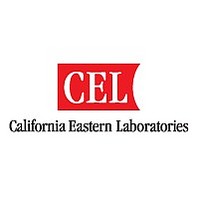ZFSM-201-2 CEL, ZFSM-201-2 Datasheet - Page 13

ZFSM-201-2
Manufacturer Part Number
ZFSM-201-2
Description
MODULE ZIGBEE 802.15.4 W/PCB ANT
Manufacturer
CEL
Series
-r
Datasheet
1.ZFSM-201-1.pdf
(17 pages)
Specifications of ZFSM-201-2
Frequency
2.4GHz ~ 2.4835GHz
Data Rate - Maximum
250kbps
Modulation Or Protocol
802.15.4 Zigbee
Applications
Home / Industrial Automation, Remote Access, Security Alarms
Power - Output
100mW (20dBm)
Sensitivity
-94dBm
Voltage - Supply
2.1 V ~ 3.6 V
Current - Receiving
30mA
Current - Transmitting
193mA
Data Interface
PCB, Surface Mount
Memory Size
128kB Flash, 96kB RAM, 80kB ROM
Antenna Connector
PCB, Surface Mount
Operating Temperature
-40°C ~ 85°C
Package / Case
Module
Lead Free Status / Rohs Status
Lead free / RoHS Compliant
Other names
ZFSM-201-2-B
ZFSM-201-2-B
ZFSM-201-2-B
PROCESSING
Recommended Reflow Profile
Parameters Values
Ramp up rate (from Tsoakmax to Tpeak) 3º/sec max
Minimum Soak Temperature 150ºC
Maximum Soak Temperature 200ºC
Soak Time 60-120 sec
TLiquidus 217ºC
Time above TL 60-150 sec
Tpeak 250ºC
Time within 5º of Tpeak 20-30 sec
Time from 25º to Tpeak 8 min max
Ramp down rate 6ºC/sec max
Achieve the brightest possible solder fillets with a good shape and low contact angle.
Pb-Free Soldering Paste
Use of “No Clean” soldering paste is strongly recommended, as it does not require cleaning after the soldering process.
Note:
Specification. See IPC-A-610 Acceptability of Electronic Assemblies, section 8.2.4 Castellated Terminations.”
Cleaning
In general, cleaning the populated modules is strongly discouraged. Residuals under the module cannot be easily removed
with any cleaning process.
•
•
•
The best approach is to consider using a “no clean” soldering paste and eliminate the post-soldering cleaning step.
Optical Inspection
After soldering the Module to the host board, consider optical inspection to check the following:
•
•
•
Repeating Reflow Soldering
Only a single reflow soldering process is encouraged for host boards.
Cleaning with water can lead to capillary effects where water is absorbed into the gap between the host board and
the module. The combination of soldering flux residuals and encapsulated water could lead to short circuits between
neighboring pads. Water could also damage any stickers or labels.
Cleaning with alcohol or a similar organic solvent will likely flood soldering flux residuals into the two housings, which is
not accessible for post-washing inspection. The solvent could also damage any stickers or labels.
Ultrasonic cleaning could damage the module permanently.
Proper alignment and centering of the module over the pads.
Proper solder joints on all pads.
Excessive solder or contacts to neighboring pads, or vias.
The quality of solder joints on the castellations (‘half vias’) where they contact the host board should meet the appropriate IPC
Page 13
ZFSM-201 Series















